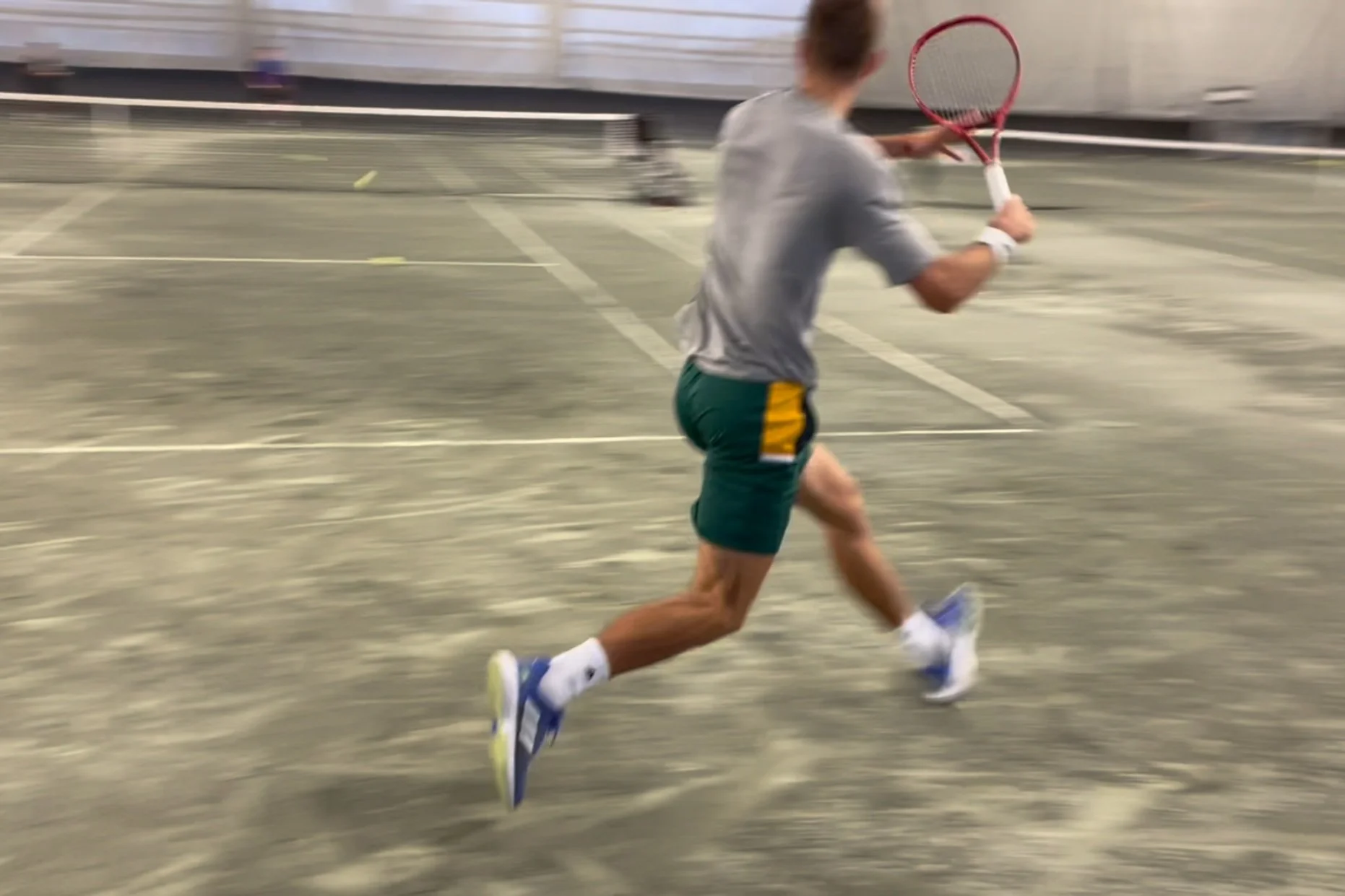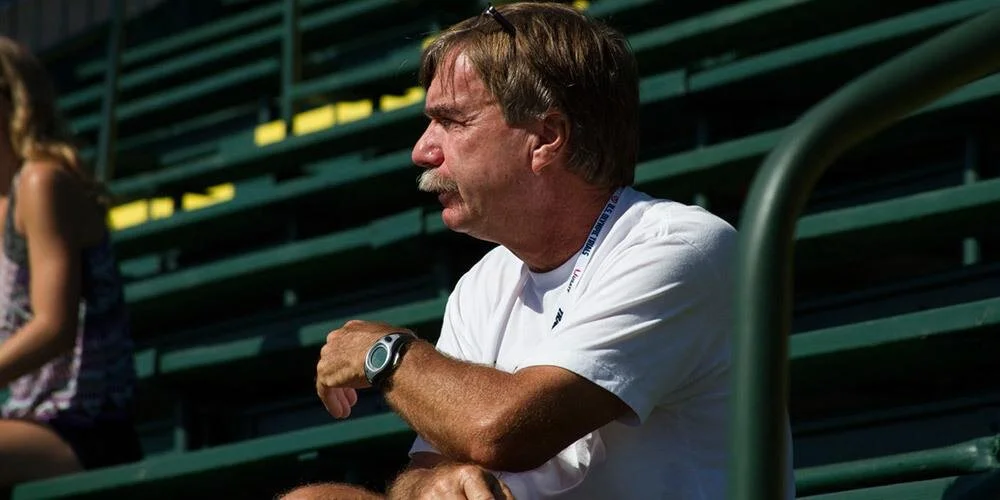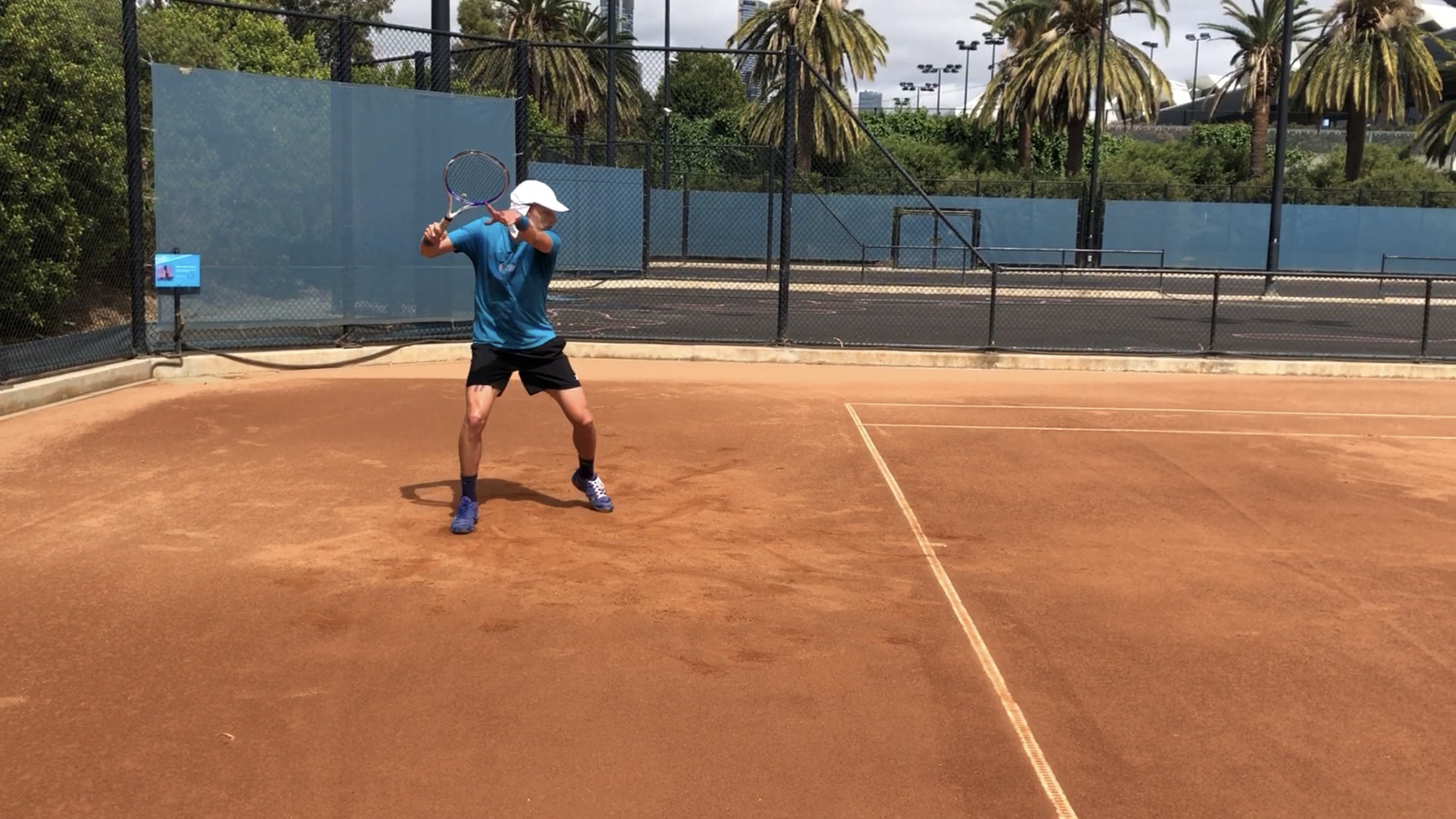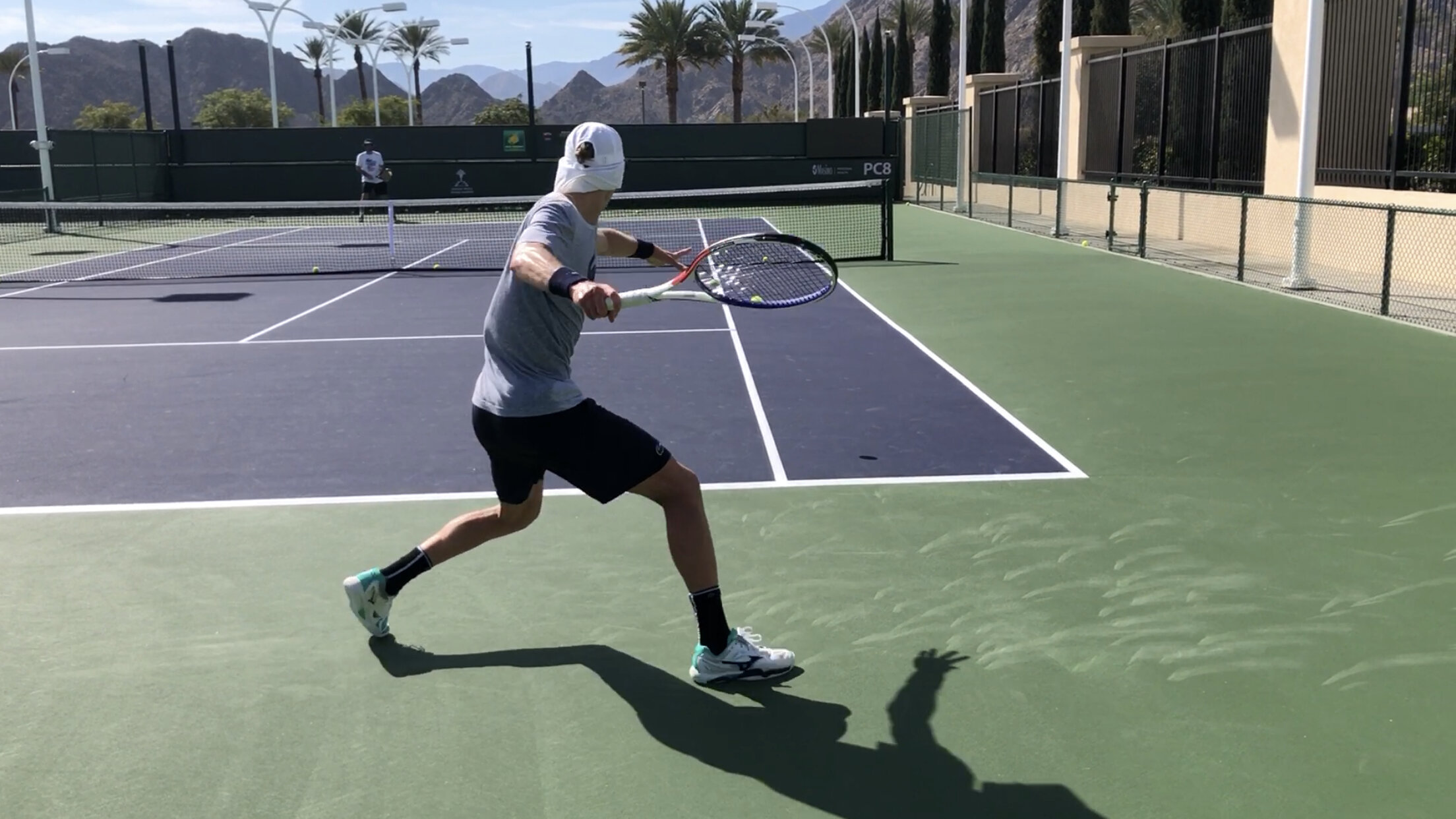t’s no surprise that I’m a fan of strength training (as long time readers of Mattspoint would know).
But strength training is an more of an umbrella term than just one type of training modality. Because there's just so many different ways that we can lift weights. Here are a few examples:
Lift light weights fast - explosive (or speed) strength. Lift heavy weights slow (with a fast/explosive intention) - maximum strength. Lift moderate weights fast - strength speed (or rate of force development).
I’ve said it before but I’ll say it again - the most specific form of training for tennis is playing tennis! Thus, tennis training - which includes on-court drills, live ball hitting, practice sets (and even tournament matches) - is the truest form of ‘sport-specific physical training’ for tennis.
So if you hear someone talk about ‘sport-specific training’ and they’re jumping on a bosu ball, performing shadow swings on the beach or some other random exercise, that is NOT sport specificity.
Coach Pfaff has been a direct mentor of mine for the last 6 years. I've learned more through his apprenticeship than any course, book or research article. With over 40 years of coaching experience, coach Pfaff has been through it all - in the trenches with world-class sprinters, consulting to ATP, WTA, NFL, NHL pro teams and today, he leads the ALTIS elite mentorship program.
We all use jumping in our training programs. But not all types of jumps are plyometric (and when it comes to improvements in elasticity & reactiveness, those details matter).
In this pilot episode, PhD candidate in plyometrics - Matt McInnes Watson - dives into what plyos are and what they aren't.
I get a fair amount of questions sent my way on a weekly basis and this past week was no different. But I thought it would be best to share them on the blog for others to benefit from as well (especially given that the questions were quite good and very relevant to what I often hear from coaches and players).
Let’s get to them!
One of those ways is to use med balls for non-throwing scenarios. I know, for the most part, med balls are used for throwing purposes (and made for this reason as well). Throwing allows us to have a shorter deceleration phase and extend the propulsion phase - akin to doing a jump squat instead of a barbell squat for the development of lower-body power.
Here's the typical trainer's concern; it's believed that players outside of the top 100 have worries that a guy like Federer doesn't - i.e. travel expenses, points to defend and so on. Many of these players perform a concentrated physical prep block for 4-6 weeks in Dec/Jan (just prior to the start of the new season) and then a number of 1-2 week blocks during the course of the year. These same trainers will also agree that this isn't enough - performing one 4-6 week block along with 2-3 smaller blocks during the year is an insufficient amount of time to develop a quality like explosive power, for instance.
Here’s the thing, it’s kind of a mess out there, isn’t it? From the latest & greatest exercises to outdated information - and promises of quick results - the tennis fitness world can be a confusing place.
The truth is, there’s no one best exercise or one best program or one best [insert training fad of the week].
Instead, what we are left with are principles. Scientific principles to be exact. Like specificity and progressive overload and adaptation. So if a program is built on this type of foundation, improvements are almost ensured. If not...well, the reverse is probably true.
Don’t believe me? Consider for a moment what my clientele looks like:
I recently saw a post on a Facebook coaching forum. It was actually a question that went something like this, “coaches, have you seen any of your players improve their tennis because of their physical training?”.
My hand immediately covered my face and I began shaking my head in disbelief (no, no, no...it can’t be).
My answer to the question is an emphatic YES! Of course I’ve seen - on numerous occasions - physical preparation directly benefiting a player’s tennis game.
And in this post, I wanted to expand on these topics in more detail to add clarity to each.
First, here’s a bit of context. It’s been nearly 10 years since I began my master’s degree in sport science at the University of Edinburgh. It was 2010 and I was an eager young lad (as the scot’s would say).
Before then, I had a lot of ‘in the trenches’ experience - as a player and a coach. But going through a masters programme got me on the research train, and I’ve been on it ever since.
This past weekend, I had several players message me looking for a training program they could do for the next few weeks (or perhaps longer) - one that wouldn’t require any gym equipment. And in light of recent events, I’m guessing they aren’t the only tennis players (and athletes in general), in this scenario.
Because of this, I’ve taken some time to create what I’ve called, The ‘No Gym’ Program. So if you’re in the same situation as many (and don’t have access to gym equipment), just scroll to the end of this page and enter your email address - you’ll receive the program for free.
When it comes to selecting the most appropriate exercise for a tennis player, it’s important that we look at it from every angle imaginable. The reason - tennis-play is not only multi-directional, but it’s also multi-planar. On top of that, there are different stances that players not only move through, but strike the ball in. And they do this on different surfaces - which can also make matters more challenging....and have an influence on exercises/drills.
A few weeks back, I had the privilege of working alongside coach Marcel du Coudray. We were coaching his pupil - ATP player Marc Polmans - at the Rogers Cup in my hometown of Montreal. Marc was accepted as the last entry into qualifying and got his first top 50 win against Andrey Rublev where he came back from 3-5 down in the 3rd set and save 3 match points at 3-6 down in the breaker (Rublev was ranked #49 in the world at the time of the match).
Most of us in tennis won’t argue that today’s game requires high levels of explosive strength - or as it’s often called - power. But many disregard some of the most influential exercises that contribute to this quality: olympic weightlifting movements.
In case you’re not familiar with olympic weightlifting movements, they consist of the clean, snatch, jerk and any variations or derivatives of these 3 lifts (videos examples are found throughout this post).
As 2018 is soon coming to an end, I wanted to share the top 5 articles from the past year at Mattspoint. While I know that some of you might read the blog regularly, others may not have had the chance to check-in weekly - here’s a second chance to do so. The following posts were the most popular of 2018:
Have you ever been working on a player's forehand and thought "they're just not getting it". And instead of talking the player's ear off with detailed mechanics or trying every cue in the book, you decide to get them to throw a med ball.
All of a sudden, after just 1 or 2 cues - something like “thrust your rear hip” or “turn your torso, then release the ball” - they found the correct movement. You then return to hitting forehands and voila, they finally ‘get it’.
By this point, I think we’re beyond prescribing tennis players to run long and slow (at least I hope we are). If you want to understand why this is the case, I urge you to read through this post, as I outline how the energy systems work and interact with one another.
Yet we still need players to be able to endure tough points, tight sets and long matches. No question about it. So how do we do this?
I recently heard that periodization is dead. For those who are unfamiliar with the term, it can be defined as the division of training & competition into various phases throughout the calendar year (this is of course a simplified definition - articles, books etc have been written on the topic but for our purposes, that’s all you need to know for the moment).
Before we tackle the statement from above, let me provide the background story. There was a once a time when athletes - primarily those competing in the Olympics - only had to (truly) peak once every 4 years.
Coaches, players, parents...even your aunt Judie know the importance of the serve in today’s modern game. More specifically, the first serve. The first serve is so critical that the top 10 servers on the ATP, year after year, win over 77% of their first serve points! And it’s not just on the men’s side. The top 10 women on the WTA win between 69%-79% of first serve points.
Want more proof? Look at Table 1 - in 2016, the top serving men won over 3/4 of their first serve points. On the other hand, when these top pros missed their first serves, they only won between 52% and 55% of their points.
I’ve been asked countless times - from tennis coaches to players and even parents - 'how can I get more leg drive on my forehand?' 'Or more jump from the legs on my serve?' 'Or more explosiveness when moving laterally?' There’s no simple answer. It truly depends on a number of factors, including your strength levels, coordination, training age, biological age, training history, genetics and more. But if I absolutely had to boil my answer down to one form of training, I’d have to look towards plyometrics.
There are many terms to describe plyometrics including plyometric training, plyos, jump training, shock training (that’s what Soviets used to call it) & ballistic training. I may use some of these terms interchangeably throughout this article but they all refer to plyometrics. Whatever you call it, it’s general premise is to increase power output.




![Plyometric Training: What It Is and What It Isn't w/ Matt McInnes Watson [Podcast]](https://images.squarespace-cdn.com/content/v1/542e007be4b08e60716458a7/1633032144170-UW5QAV449DF9W0I9RNNQ/mmw1.png)













